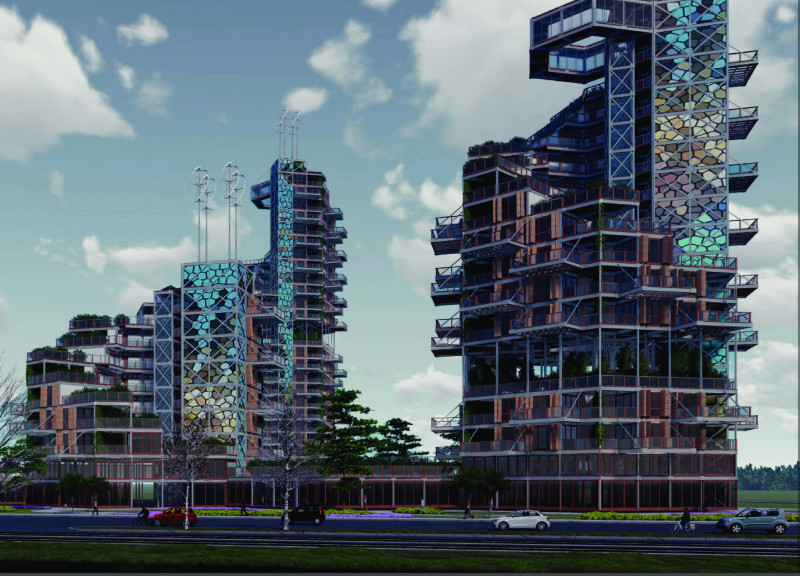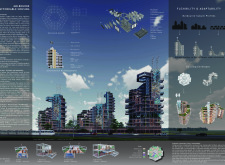5 key facts about this project
The primary function of this architectural project is to provide affordable, quality housing while fostering a sense of community among residents. By using modular units, the design can accommodate various family sizes and lifestyles, from single professionals to larger families. Each unit is thoughtfully designed to maximize space and natural light, creating a comfortable living environment. This flexibility enables the project to respond to evolving demographics, ensuring that the design remains relevant and practical.
A standout feature of the project is its environmental responsiveness. This housing design integrates various sustainable systems that contribute to its energy efficiency. Solar collectors are installed to harness renewable energy, while small-scale wind turbines generate additional power. The incorporation of rainwater harvesting systems promotes water conservation, allowing residents to utilize collected rainwater for non-potable needs. Furthermore, the inclusion of green walls not only enhances the aesthetic appeal of the building but also contributes to humidity regulation and air purification. These elements work together to minimize the carbon footprint and overall environmental impact of the project, positioning it as a model for future housing developments.
In terms of materiality, the project employs a selection of sustainable and locally sourced materials. Cross-laminated timber (CLT) serves as the primary structural component, offering strength while being a renewable resource. This decision reflects a commitment to environmentally friendly practices while providing a warm, natural aesthetic. The use of metal cladding provides durability and weather resistance, further ensuring the longevity of the structure. Local stone and mosaic tiles add character, grounding the project within the community and promoting local craftsmanship. This material palette not only supports sustainable building practices but also enhances the visual identity of the project within the urban context.
The architectural design carefully considers the building’s orientation and layout, effectively responding to solar access and prevailing winds. This attention to environmental factors enhances the overall performance of the building while contributing to the comfort of its residents. The vertical design optimizes space without compromising the character of the neighborhood, allowing the project to blend seamlessly into the existing urban fabric. Additionally, communal spaces are integrated into the design to promote social interaction among residents, encouraging a sense of community through shared gardens and flexible gathering areas.
The architectural project in Melbourne reflects a thoughtful approach to urban living, answering the challenges posed by population growth and housing affordability with practical, sustainable solutions. The project not only prioritizes the individual needs of residents but also emphasizes the importance of community connectivity and environmental responsibility. Readers are encouraged to explore the architectural plans, sections, and overall designs to gain deeper insights into the innovative ideas that underpin this project, illuminating the potential for future developments in urban housing.























